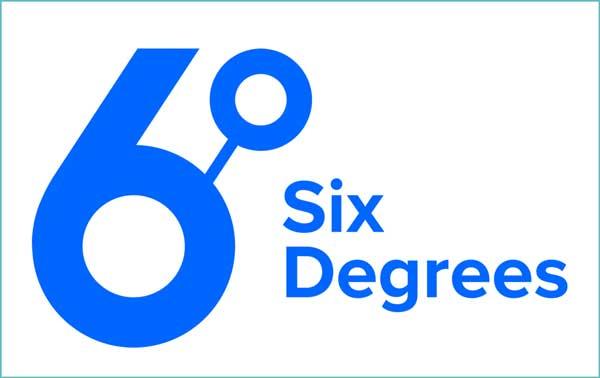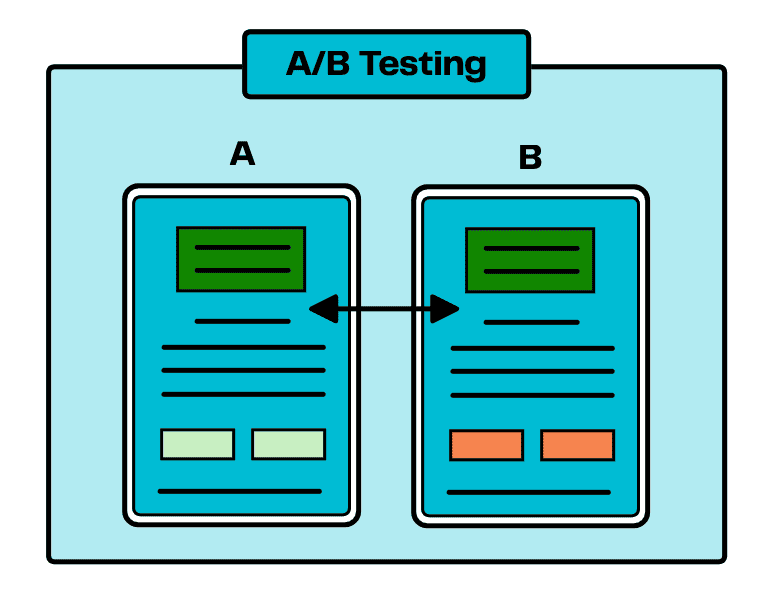Remember the days when building brand awareness meant spending a fortune on TV ads and hoping your billboard didn’t get blocked by a tree? Well, those days are long gone, and thank goodness for that. Social media for businesses has completely rewritten the rules, giving even the smallest businesses a chance to shine. Now, it’s less about big bucks and more about big ideas, creativity, and connection, i.e., reaching the right people at the right time.
In this article, we’ll explore the big question, “How has social media changed marketing?” So, grab a cup of coffee, get comfortable, and let’s dive in.
The Evolution of Marketing Through Social Media
Marketing has undergone a huge transformation with the rise of social media. Not long ago, traditional methods ruled the scene, making marketing one-sided – companies would broadcast their message and hope the right people were listening. Social media changed all that, turning marketing into a two-way street where businesses can interact with their customers in real time and receive feedback right then and there.
Traditional Marketing vs. Social Media Marketing
Traditional marketing is what people used before the emergence of the Internet to share information about their products or services. This includes TV commercials, radio ads, billboards, and newspaper ads.
Social media marketing, on the other hand, is all about using platforms like Instagram, Facebook, or TikTok to promote products. It’s faster, cheaper, and allows businesses to talk directly to their audience.
In other words, traditional marketing is like putting up a big billboard for everyone to see, while social media marketing is more personal and resonates with customers.
Key Milestones in the Development of Social Media Platforms
Social media has come a long way, starting from simple websites to the giant platforms we use today. Here are some of the key milestones that shaped that journey over the years.
- Early Platforms: In the late 1990s and early 2000s, platforms like Six Degrees and Friendster appeared. Both platforms allowed users to list friends and family and connect with them through sharing photos, videos, and events. They also could leave comments on each other’s posts.

- Facebook Changed the Game in 2004: Facebook launched and quickly became the place to share photos, updates, and stay connected. It also introduced the idea of a “news feed,” making it easier to scroll and see what friends were up to.
- The Rise of Visual Platforms: In 2010, Instagram appeared and focused on sharing pictures, while Snapchat introduced the concept of quick, disappearing messages. Although messaging was still an important feature on these platforms, their defining strength was visual storytelling, so photos and videos were the main channel of connection.
- Videos Take Over: YouTube grew into the biggest platform for sharing videos, while TikTok, launched in 2016, made short, fun clips a trend worldwide.
- Connecting Globally: Twitter brought quick, real-time updates to the world, while WhatsApp made texting and calls accessible across countries.
The Shift Toward Digital-First Marketing Strategies
Over the years, businesses have started to prioritize online channels over traditional marketing methods to reach their audience. Why the change? It’s simple. Business owners realize that it’s far more effective to meet people where they already are rather than run broad offline marketing campaigns that may or may not land with the right audience, let alone lead to making sales.
Digital-first marketing focuses on tools like websites, social media, email campaigns, and online ads. It puts data at the forefront to make sure each and every marketing decision has a reason and a goal.
For instance, instead of running a generic ad, a company can show you an ad for something you’ve already looked at online. It not only increases the possibility of you making a purchase, but also gives the business valuable insight into key actions, like how many people clicked the ad, visited the website, or moved further down the sales funnel.
How Social Media Enables Global Reach for Even Small Businesses
Social media and the potential growth opportunities it provides are equal for everybody, be it an individual blogger or a small business. What counts is the creativity and the image you’ll create over time. One thing is sure: even if you’re just starting your journey, you can become a popular brand with a strong social media presence, regardless of all the gaps and ongoing improvements your business is still going through. Here’s a more thorough listing of benefits that social media can expose your business to:
- Social media boosts visibility, and that’s what any small business strives to achieve. Practically all social media channels provide free access to a vast audience, representing potential customers for your growing business. So, being present on social platforms and actively engaging with your community will be the first step to brand awareness marketing.
- Social media for businesses allows owners to run targeted ad campaigns, which is particularly important for small businesses as that is how to implement brand awareness best. Platforms like Facebook and Instagram allow users to target an audience based on their age group, interests, behaviors, and other criteria. However, you can use a virtual personal assistant to improve the efficiency of your social media marketing and get more reach.
So, if you own a cozy coffee shop in a small town, you can extend your reach to nearby areas and promote your signature foaming latte to a larger audience, regardless of your business location.
- Social media offers a great opportunity for businesses to engage in partnerships and collaborations with influencers, other brands, or industry leaders. Seeing you interact with more prominent brands or successful individuals will automatically shield your business with social proof and extend your brand’s reach to new audiences.
Leveraging Data and Analytics for Effective Marketing
Using social media for businesses comes with a full package. It not only ensures the social engagement around your brand but also provides numbers and stats to understand what works best with whom and when. By tracking metrics like reactions, shares, comments, click-through rates, and more, you can understand what resonates with your audience most effectively.
For example, if you notice that a particular post or style receives considerable attention, you can continue creating similar content to keep the momentum going. Or, if you’re unsure about the effectiveness of a certain type of content, you can conduct A/B testing and put two different types of content in a test to see which brings better results.

As already mentioned above, social media also lets you know details about your audience, such as age, location, and interests, which play a key role in crafting a unique and impactful marketing campaign.
Here’s a list of metrics that can be extracted from social media:
- Likes/reactions: the feelings that your posts evoke
- Shares: the number of times your content is shared, indicating its reach
- Comments: feedback from customers about your posts
- Click-through rate (CTR): the number of times people have clicked on your links or CTA buttons
- Saves: when users save your post for later, indicating valuable content
- Reach: the number of unique users that see your content
- Impressions: the total number of times your content is displayed, even if it’s seen multiple times by the same user
- Follower growth rate: the pace at which your social media following is growing
- Audience demographics: data on age, gender, location, and interests of your followers
- Active times: insight into when your audience is most active online
- Post engagement rate: percentage of users who engage with a specific post
- Video views: the number of times your video content has been viewed
- Video completion rate: percentage of users who watched your video till the end
- Story views: number of users who view your Instagram, Facebook, or Snapchat stories
- Conversion rate: percentage of users who take a desired action
- Cost per click (CPC): the amount of money you pay for each click in your social media ads
- Cost per thousand impressions (CPM): the amount of money you pay for 1000 ad impressions
- Lead generation metrics: the number of leads captured through special media campaigns

The Role of Influencer Marketing
Influencer marketing is one of the most popular types of marketing that involves a celebrity in a particular field who promotes a product or service in the same niche. Basically, it’s word-of-mouth advertising but on social media. These influential people, or so-called influencers, showcase or talk about a product or a service on video, highlighting its benefits and focusing on how it can change people’s lives.
To create an influencer marketing campaign, brands identify social media influencers whose audience matches their user persona. Then, they reach out to them with a proposal to work together on a campaign. Once mutually beneficial terms are agreed upon, the influencer creates content, mentioning the brand and/or a specific product/service they have. This process usually takes a communication thread to craft a piece of content that is authentic, credible, and resonates with the target audience.
Actually, with influencer marketing becoming a key part of modern marketing strategies and influencers frequently receiving collaboration proposals, creating a recommendation video that feels natural and authentic has become increasingly challenging. The key is to avoid revealing the behind-the-scenes agreements between a brand and an influencer.
With that being said, the impact of influencer marketing cannot be underestimated. Numbers speak for themselves. Influencer marketing has grown to become a $21.1 billion industry in 2023. Looking ahead, the industry is expected to continue its upward trajectory and reach an estimated $48 billion by 2027.
Challenges in Social Media Marketing
As they say, no good thing comes easy. Challenges exist in social media marketing as well. Let’s take a look at the most common ones that all brands come across.
- Keeping up with the constant changes in trends and algorithms
The average lifespan of a social media trend is very short and continuously shrinking, and so is the attention span of social media users. Thus, once a trend goes viral, it’s important to be quick and share your version of the trend at its peak of popularity.
- Juggling multiple social media platforms
Managing brand presence on multiple social platforms is not an easy task. What’s easy is getting lost in the pile of work, deadlines, and ideas, all while maintaining consistent quality and communication (including negative comments or complaints, which require a more careful and strategic approach). Having an organized calendar would be a smart idea in this case to avoid messy profiles and burnout.
- Getting short of creative ideas
To stand out in the crowded social media world requires an endless amount of creative ideas and implementation. With millions of businesses fighting for attention, cutting through the noise can be tough. So, make sure you involve your team members in the idea-generation process because practice shows that the slightest thought can grow into something big and gain virality on social media.
Future Trends in Social Media Marketing
As we discussed above, social media trends have a short life. So, let’s highlight some trends that seem to have the potential to reign for longer.
Today, AI is on the tip of everyone’s tongue. Businesses aim to somehow instill AI in their products or services. So, sharing posts and publications around AI is inevitable on social media.
- Decreasing importance of hashtags
Hashtags have been an inseparable part of social media for a long time. But recently many social platforms have stopped giving them the power they used to have. The reason is that hashtags have been used by spammers to get content in front of larger audiences and clutter up people’s feeds.
- Short-form video content still on top
In the last couple of years, the number one action most social media users have been doing, above all else, is endless scrolling. And what do they watch? Of course, videos! Short videos. This trend is so popular that the chances that it will leave the stage in the near future are really low, especially when there are whole platforms revolving around video content.
Final Thoughts on Impact of Social Media on Marketing and Brand Awareness
When speaking about marketing and brand awareness, we simply cannot bypass the topic of social media. Social media for businesses is an essential part of brand recognition. You may have the product or service people are looking for, but if you’re not promoting it on social platforms, you may just as well consider it doomed to death.
As we discussed throughout this article, if you want to create a solid name for your brand and establish a trustful environment around it in the eyes of your potential customers, you’ve got to make social media your best friend.
With this, let me wish you good luck on this journey. And if you ever start to doubt the importance of social media for one reason or another, come back to this article – it will help you reconsider your decision.








